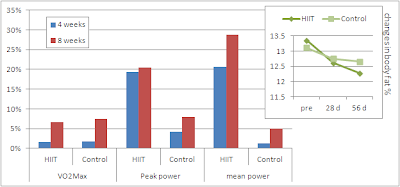 |
| Image 1: The Korean National Team - this are the kind of study subjects you want to look for if you are searching for studies that may help you, a fit physical culturist to improve your performance (img Yahoo) |
Those of you who have been following the SuppVersity posts for quite some time now, know that I have continuously been ranting against classic endurance training. Not so much, because I think that this is not a sport you can enjoy (I know from personal experience that the "joy" can easily become addictive, though), but because
many people perform what they think would be "healthy cardiovascular exercise" with the false expectation that running a marathon will improve their health and physique - more often, than not, the opposite is the case. And negative effects on both your physique (unless you consider being called a skeleton flattering) and longterm health become almost inevitable, when your daily 30 minutes of jogging or your 1h brief walk with your dog progressively increases to a frantic 10k run.
To each his own high intensity training
 |
| Image 2: Add 100-150lbs to a weight-west and test how "low" the intensity of a 4km/h walk on a treadmill is for the morbidly obese subjects in the studies that perpetuate the myth of the fat-burning effects "low intensity" exercise (img rosstraining.com). |
And while the medical orthodoxy keeps putting out review after review emphasizing how beneficial classic endurance exercise is for the obese prediabetic, they do not give a damn that the 4km/h walk on a treadmill that makes the 250pound sedentary housewife sweat, pant and lose weight, will not have
any impact on the girl with the unsexy love-handles who finally wants to get the body of the Shape cover models she is admiring. I mean, think about it: It's all about intensity!
If the girl with the love-handles grabbed one of those military backpacks and loaded it with 5x30lbs plates, hopped on the treadmill and started walking at 4km/h, what would you call that? I would call it High Intensity Training (HIT). Now, the girl would probably fall off the treadmill every 30s because the load was way to heavy. What would you call it if she jumped back on after catching her breath? I would call it
High Intensity Interval Training (
HIIT).
Assuming that you got the message, it should stand out of question that you as a reasonably fit physical culturist can adopt short (max. 50min) bouts of low intensity endurance training as a means of regeneration, but if you are looking to improve your physique or exercise performance (outside of long-distance running) you are way better of if you follow the example of the 29 judoists from the Yongin University in Korea who participated in an 8-week study at the
Korea National Sport University in Seoul (
Lee. 2011).
 |
| Figure 1: Subject characteristics (left) and training program (right) of the 29 judoist participating in study (Lee. 2011) |
If you take a look at the subject characteristics in figure 1 (left), you may note that this is the kind of study you and I must rely on, when we are designing our training routines if we want to improve our cardiovascular fitness level and shed the last unaesthetic pounds of body fat - and, if the results from this study translate into your training practice, the addition of an early morning HIIT sprinting session on Monday, Tuesday, Thursday and Friday (exact protocol cf. figure 1, right) could provide exactly that: a
drop in body-fat and an
increase in anaerobic performance. This is particularly noteworthy, because the subjects performed the interval training as part of an
already arduous 8-week training camp with
concurrent strength and judo training (I wonder if any of the participants was afraid to lose muscle ;-)
 |
| Figure 2: Effects of standard and standard + additional HIIT training on VO2Max, peak and mean power (left), as well as body composition in 29 judoists during an 8-week training camp (Lee. 2011) |
With their already low body fat percentage of ~13% and a
caloric intake of 3.500kcal/day (remember none of the athletes wanted to lose weight), the slight (and statistically non-significant), yet nonetheless evident body-recompositioning effect is certainly not to be scoffed at, if you look at the
profound performance increases in the anaerobic peak and mean power test (cf. figure 2).
That the VO2Max, i.e. the aerobic performance did not benefit above the normal protocol is yet an oddity of the study, (cf. "
HIIT Even For Infarction Patients") of which the scientists assume that it could be related to the fact that the normal training protocol alone would have been enough to max out on the already high aerobic capacity of the athletes. Which, and thusly we have again come full circle, leads me back to my initial recommendation to
fine-tune your training protocol to your needs, which (I would hope) are completely different from the ones of the average sedentary, obese, pre-diabetic resident of the Western hemisphere. And in case you want to learn more about how to do that, I suggest you
come back tomorrow, for the next installment of the Intermittent Thoughts with tipps on programming success that will work regardless of whether you will or won't use an intermittent fasting protocol ;-)






